
by Matthew Orwat | May 19, 2015
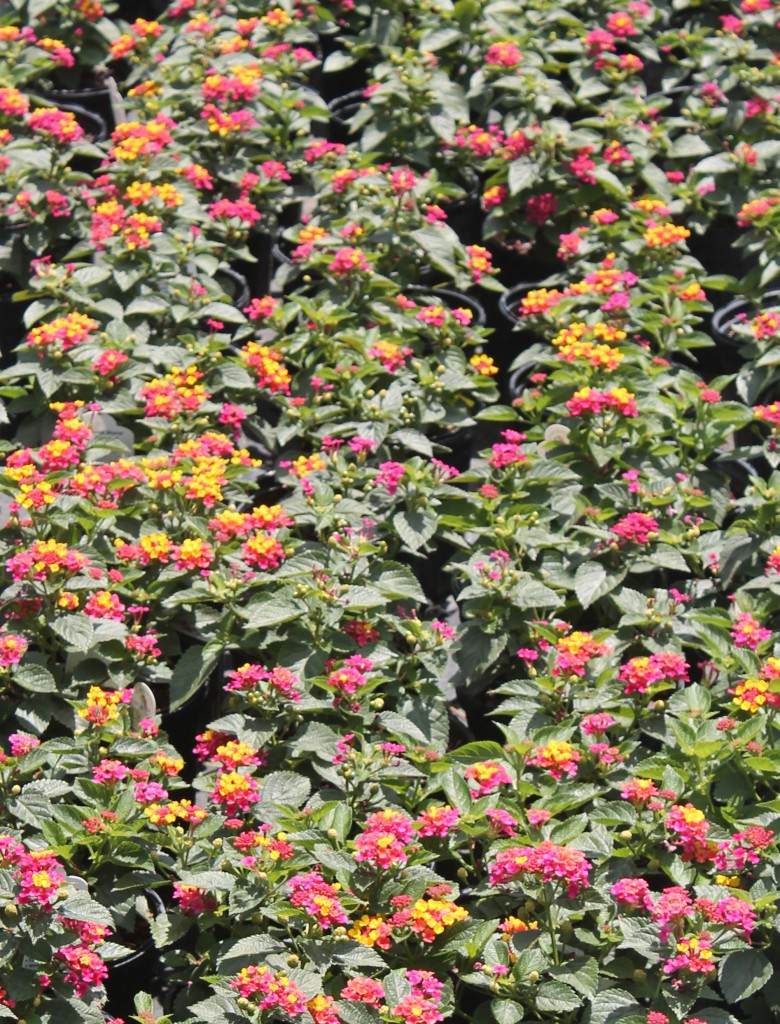
Dwarf lantana – Image UF IFAS Extension, Matthew Orwat
With the heat of summer already here, we all know that our pansies, petunias and snapdragons are on their way out. This leaves us wondering what we could plant that will give us color throughout summer and fall to the first frost.
Many are weary of Lantana camara, the common garden lantana, because of its potential as an invasive species and large rampant size. Good news, there are several dwarf cultivars that have no invasive potential because they are sterile. Additionally, many other dwarf cultivars grow slow and produce few seed, so they have low invasive potential.
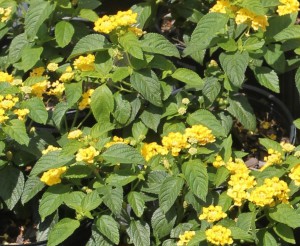
Dwarf lantana. Image credit UF/IFAS, Matthew Orwat
Northwest Florida is not in the natural range of the endangered South Florida native Lantana depressa, so the outcrossing danger does not exist in our area.
Dwarf lantanas are available in either mounding or trailing types. Mounding types rarely get over 1 foot tall and have an equal spread while trailing lantanas stay lower to the ground but can spread several feet. They are available in several colors including yellow, purple, white, multicolor and red. They provide reliable color in flushes from late spring until first frost
When mature, dwarf lantana are drought tolerant but need supplemental watering to get established. They also thrive in poor soils and need little fertilization.
Dwarf lantana usually acts as a perennial, but die to the roots during extremely cold winters.
Lantanas that are known to be relatively non-invasive include Patriot, Hallelujah, Sunburst, and Cowboy. Florida Exotic Pest Plant Council recognizes the cultivars ‘Gold Mound’, ‘New Gold’, ‘Alba’ and ‘Patriot’ as cultivars that are not known to produce viable seeds. Other newer dwarf varieties need to be evaluated on a case by case basis, but varieties the author has observed as no to low seed set in the landscape. Also if home gardeners are worried about seed production, spent blooms can be pinched off so no seed can form. This pinching off practice also speeds up re-bloom and is thus highly encouraged.
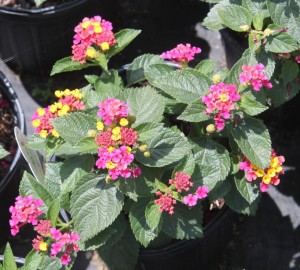
Dwarf lantana – Matthew Orwat, UF/IFAS
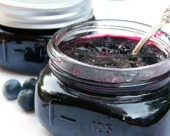
by Matthew Orwat | Apr 21, 2015

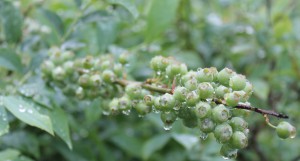 In all North Florida Counties, blueberry jam, blueberry cobbler and fresh blueberries seem to be a staple. This is because there are many home gardeners are able to consistently grow a top quality product. This year blueberries are very large already on plants throughout the panhandle! The increased size may be indicating earlier maturity than in the previous few years.
In all North Florida Counties, blueberry jam, blueberry cobbler and fresh blueberries seem to be a staple. This is because there are many home gardeners are able to consistently grow a top quality product. This year blueberries are very large already on plants throughout the panhandle! The increased size may be indicating earlier maturity than in the previous few years.
Backyard gardeners also desire to grow the same type of blueberries grown by local farmers but sometimes struggle to find the correct type. Vaccinium ashei (commonly known as rabbit-eye blueberry) is a species of blueberry native to Florida and adapted to the late frosts we sometimes get in Northwest Florida during the months of February and March. It is recommended that this species be grown in this area, not its sister species the Southern Highbush, Vaccinium darrowii. There are several dwarf cultivars of Vaccinium darrowii that can be used to great effect in the landscape, but will not produce a noticeable crop of fruit most years.
The rabbit-eye blueberry is a deciduous shrub growing to 3 to 6 feet tall and with up to a 3 foot spread. The leaves start out red-bronze that turn dark-green when fully developed. It has small, white bell-shaped flowers. It produces 5 mm diameter fruit, dark blue to black, with a pale gray wax coating.
Rabbet-eyes are self-infertile, meaning that they must have two or more varieties to pollinate each other. Therefore it is advisable to plant two or more cultivars close together to ensure complete fruit set. Recommended cultivars for our area include, ‘Brightwell’,’ Climax’, ‘Beckyblue’, ‘Tif-Blue’, Powderblue, ‘Woodard’, ‘Chaucer’ and ‘Bluegem’. Old, local plants can be found in gardens and in the woods, due to the fact that the WPA planted them under pines in the 1930s. These can easily be propagated by cuttings or by nicking and burying a lax stem under soil for a few month. Once the stem forms roots, it can be severed from the mother plant and transplanted.
Blueberries grow best on acid soil at a pH of 4.0 to 5.2. Few pests and diseases bother them, with the exception of scale, whitefly and mealybug. These are controlled with a combination of dormant oil sprays, and insecticidal soap.
Blueberries enjoy soil rich in organic matter and benefit to liberal applications of pine bark mulch. Their roots are fairly weak and should not be planted near turf or other weeds which may out-compete them in the race for water and nutrients. Mulching eliminates this grass and weed competition. In soil where organic matter is very low, such as in coastal sand hills, gardeners should grow blueberries in 2 foot deep trenches filled with rotting pine bark. Blueberries enjoy being spoon fed fertilizer, since heavy fertilizer doses stop fruit set and may damage fragile root systems.
When planting, it is advisable to not include fertilizer in the planting hole. “Blueberry Special” fertilizer mixes are available which are made up of ammoniacal or urea based nitrogen sources, with an analysis of 12-4-8 and 2% magnesium. This mixture is available at many local feed and garden stores. New plants should get one ounce per application in April, June, August and October. 2 year plants should receive 2 ounces per application and older plants should receive 3 ounces per application. Fertilizer should be spread in a circle 2-4 feet in diameter around the plant for optimal root uptake. It does no good to just pour the fertilizer at the plant base, since feeder root are further out from the plant.
Feel free to contact your UF IFAS extension agent for more information about blueberry cultivation
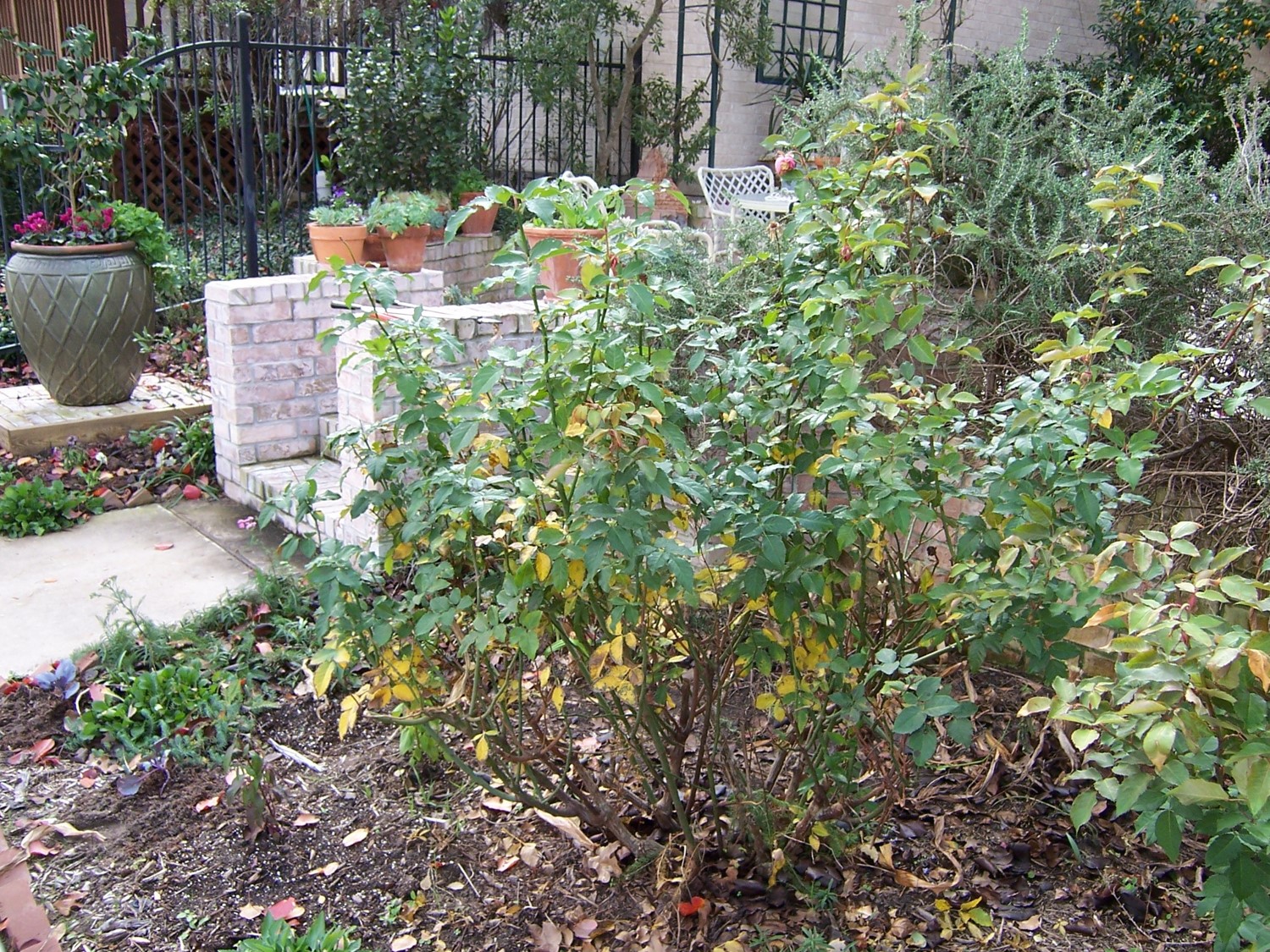
by Matthew Orwat | Mar 5, 2015
It is said that a picture is worth a thousand words. Please follow as a favorite shrub rose, Belinda’s Dream, is pruned.

Belinda’s Dream Rose – Before pruning, with dense thick growth. Time to open this plant up !

Start pruning by removing dead and diseased wood. Next remove crossing or rubbing branches, unproductive old growth and weak spindly growth
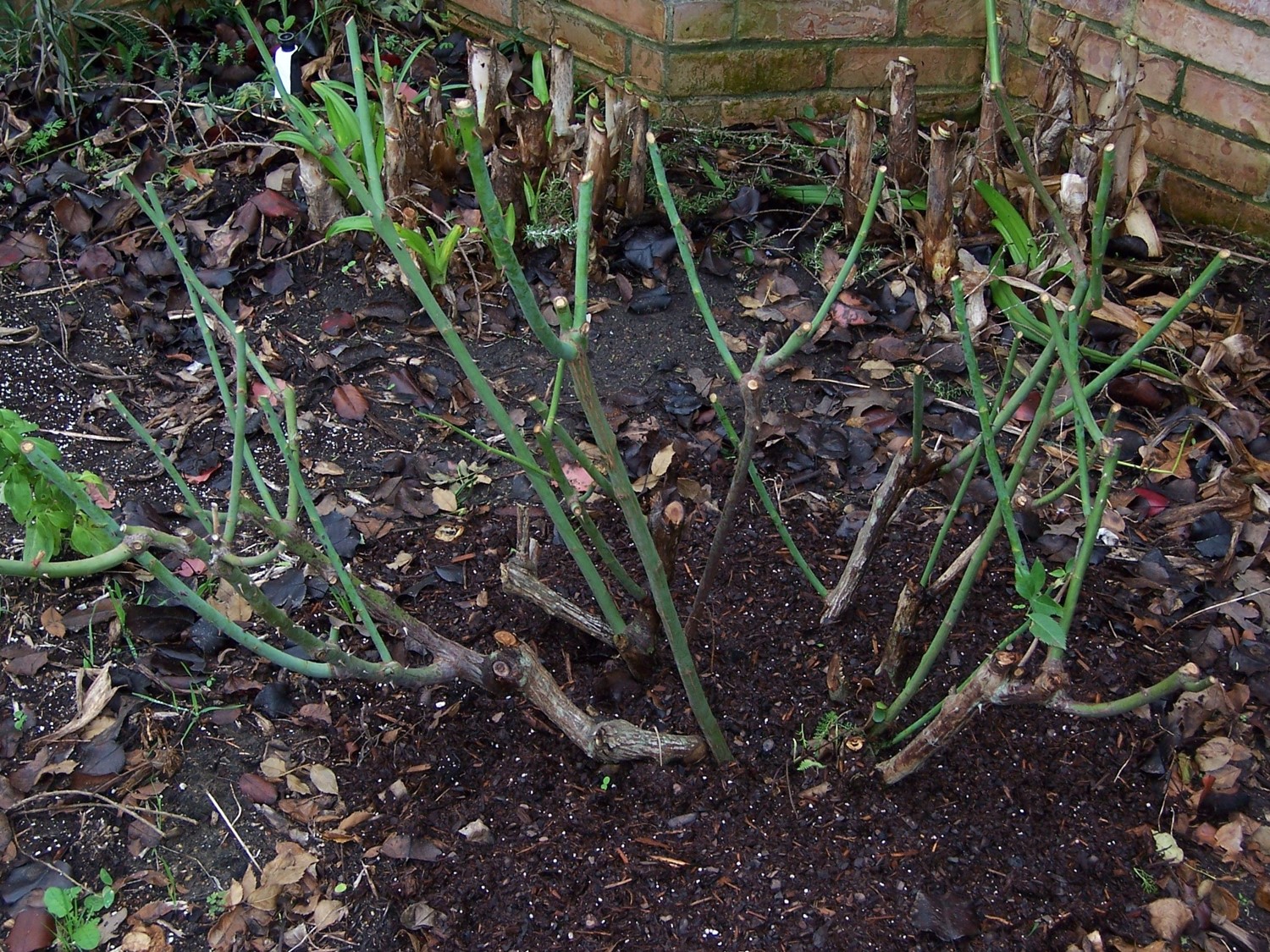
Shorten remaining growth by about half and look ! Your rose is pruned and ready to bear large flowers on long stems for another season !
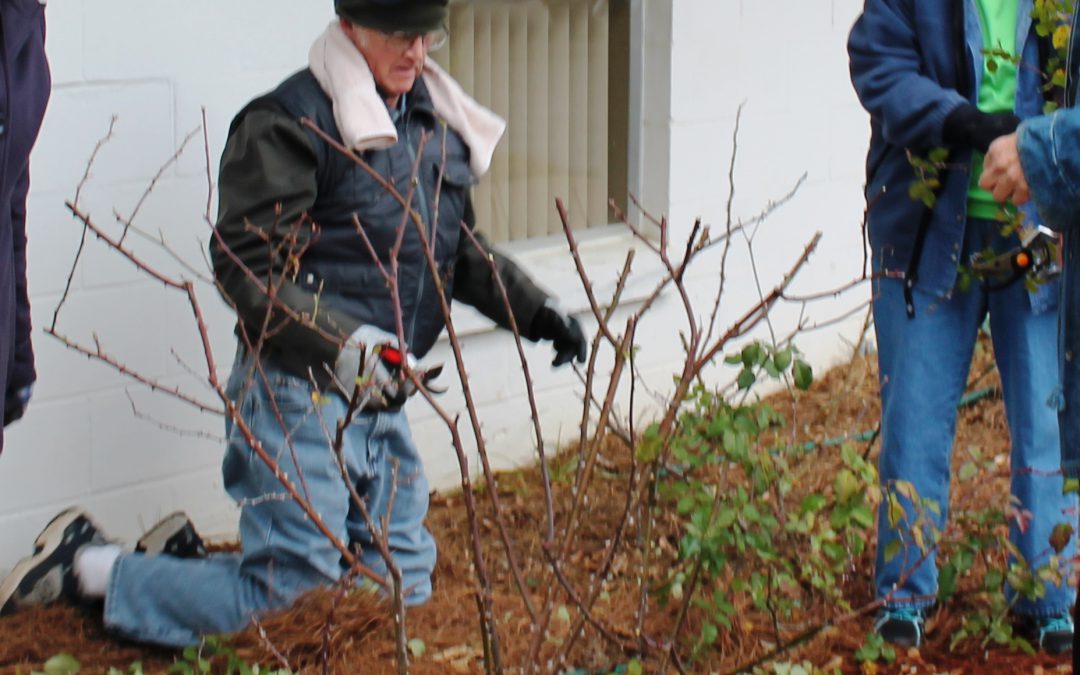
by Matthew Orwat | Mar 3, 2015
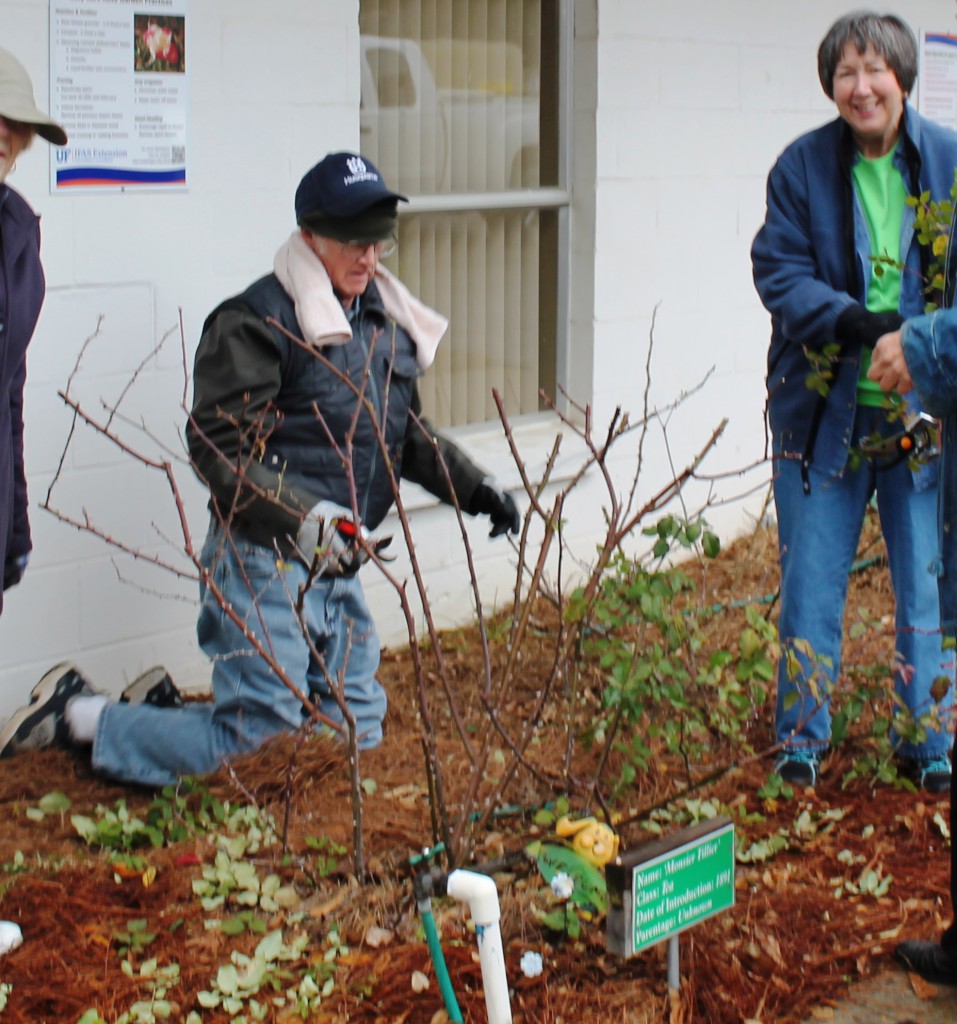
The process of pruning roses. Image Credit Matthew Orwat
Many rose enthusiasts ask every season? When do I prune my roses? The general recommendation is February 15th. If that recommendation is followed it’s usually not harmful, though climate can be very different from the coast to the state line . Therefore, my typical answer is to advise gardeners to prune roses when the Azaleas are in bloom. Typically, Azaleas are in full bloom or have finished blooming by the beginning of March. In many areas of the Florida Panhandle this year, they have not started due to late season freezes.
March 1st it is time to prune repeat blooming roses regardless of the condition of the Azaleas, so that gardeners will enjoy a few spring bloom cycles before the heat sets in.
When pruning roses there are several factors that need to be considered. First is the type. Is the rose a Hybrid Tea, Floribunda, Old Garden Rose, Shrub or Climber? Is it once blooming or repeat blooming? Once blooming roses and many repeat blooming climbers perform best if pruned after the spring display. This ensures the largest amount of bloom possible.
Hybrid Teas, Floribundas and their ilk are usually pruned back at least by half, keeping the strongest 4-8 canes and removing old, diseased, damage or non productive wood near the base or juncture of a large cane.
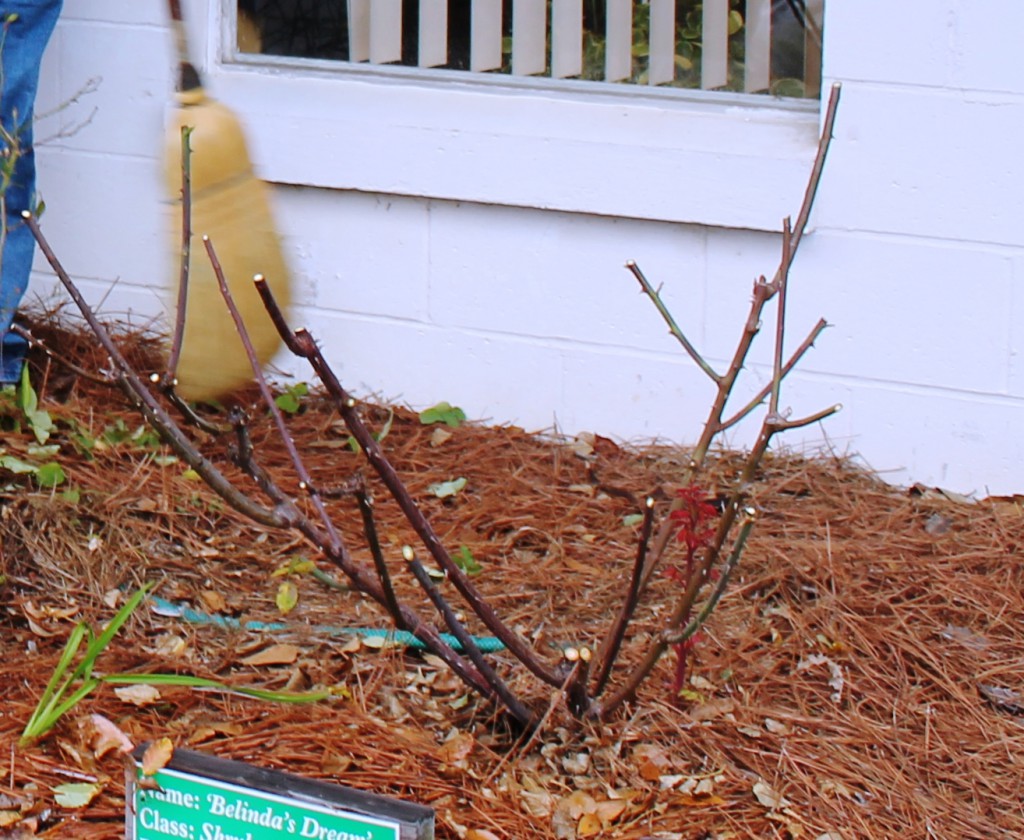
Typical “light” pruning of a Hybrid Tea or Floribunda. Image Credit Matthew Orwat
Old garden roses are seldom pruned hard. The best method in pruning old garden roses is to remove dead, old or unproductive wood, and eliminate crossing branches and excessive inward growth. This opens up the plant and allows for increased airflow, which reduces disease incidence. Once the plant has been “opened up” it may be pruned back by 1/3 to 1/2. Pruning back Old Garden Roses by 1/3 to 1/2 is not necessary but is often done for space considerations.
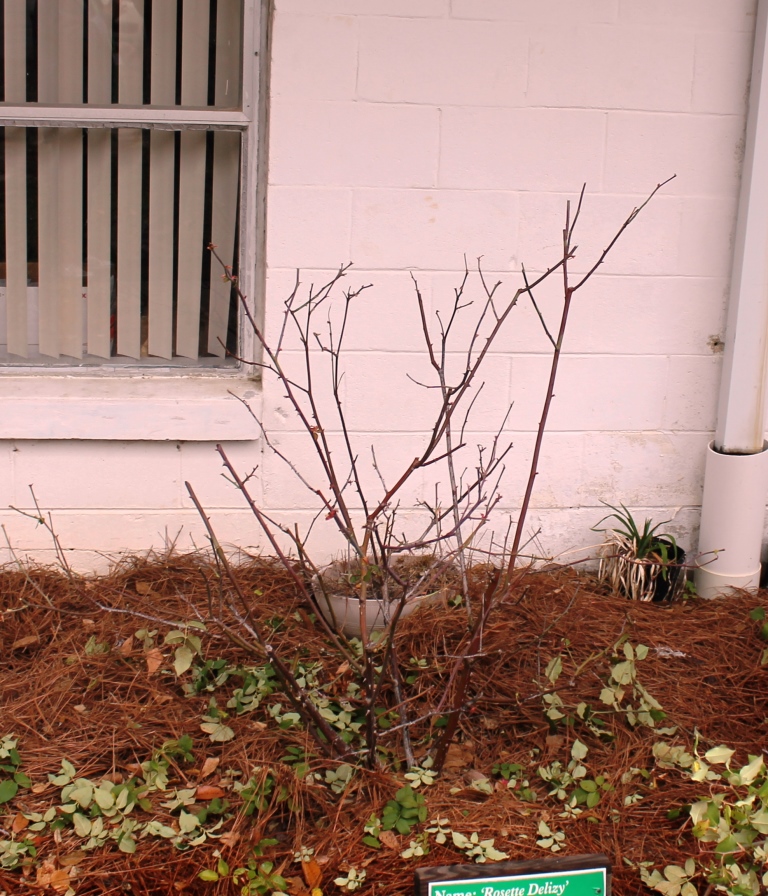
A lightly pruned old garden rose. Image Credit Matthew Orwat
Many Shrub Roses, such as Knockout, and various Old Garden Roses are trimmed several times a year with hedge trimmers. This is often the only pruning done except for the annual removal of dead or non-productive wood.
Additionally, roses benefit from the removal and disposal of any remaining leaves after the completion of late winter pruning. This helps reduce disease carry over from the previous year and induces a short dormant period.
Along with pruning it is often advantageous to spray with a dormant fungicide spray, such as Lime-Sulfur. This can be found at farm supply stores or nurseries and must be applied according to label directions. It is especially important to cover the skin when using this product, since the sulfur component is caustic to skin in its concentrated form. It will also burn any new growth, so it can only be used during the dormant season.
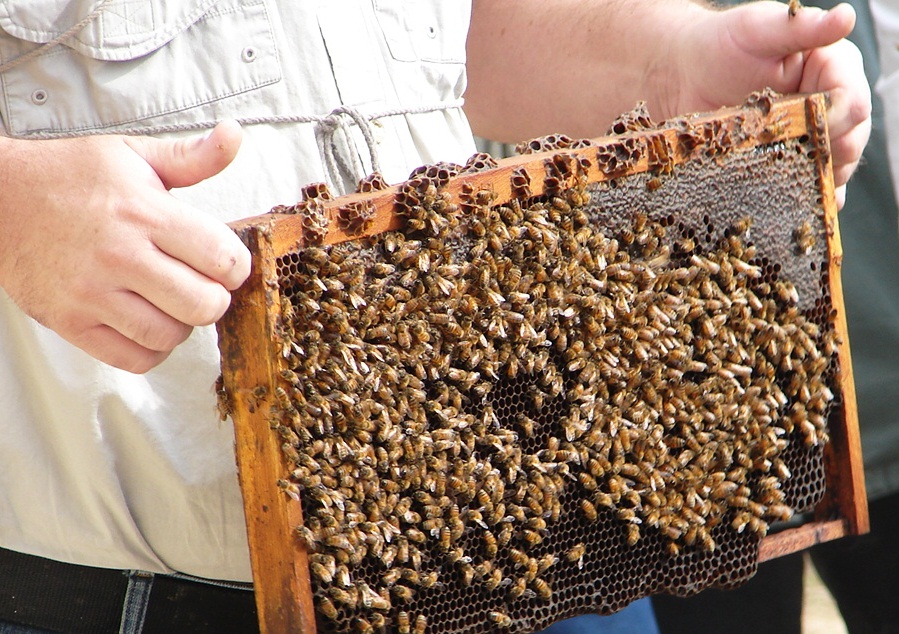
by Matthew Orwat | Feb 13, 2015
UF/IFAS Extension
2015 Beekeeping in the Panhandle Short Course
March 9th

The UF/IFAS Extension Panhandle Agriculture Team is pleased to once again offer a Beekeeping Short-Course in March, 2015. These classes will be offered via interactive video at Extension Offices across the Panhandle. Please call your local UF/IFAS Extension Service (listed below) to register.
Classes will be taught by Dr. Jamie Ellis and other state and nationally recognized experts from the University of Florida Honey Bee Research and Extension Lab and the Florida Department of Agriculture & Consumer Services Bureau of Plant and Apiary Inspection.
Classes are Monday evenings from 6-8 pm Central Time, 7-9 pm Eastern Time, with a Saturday morning bee-yard field day 9-12 am! Each presentation will be followed by an interactive question & answer period.
March 9: Honey Bee Biology, Anatomy, & Hive Structure
March 16: Bee Nutrition and Bee Botany (Identification of Nectar Plants)
March 21: Bee-Yard Field-Day – A hands on learning opportunity!
March 23: Important Pest and Diseases – Identification and Management
Registration for all four classes is $20 per person, or $30 for a family. This fee covers course materials and refreshments.
Please contact your local UF/IFAS Extension Service (see list below) to register:
- Bay County 850-784-6105
- Calhoun County 850-674-8323
- Escambia County 850-475-5230
- Franklin County 850-653-9337
- Gadsden County 850-875-7255
- Gulf County 850-639-3200
- Holmes County 850-547-1108
- Jackson County 850-482-9620
- Jefferson County 850-342-0187
- Leon County 850-606-5202
- Liberty County 850-643-2229
- Okaloosa County 850-689-5850
- Santa Rosa County 850-623-3868
- Wakulla County 850-926-3931
- Walton County 850-892-8172
- Washington County 850-638-6180















